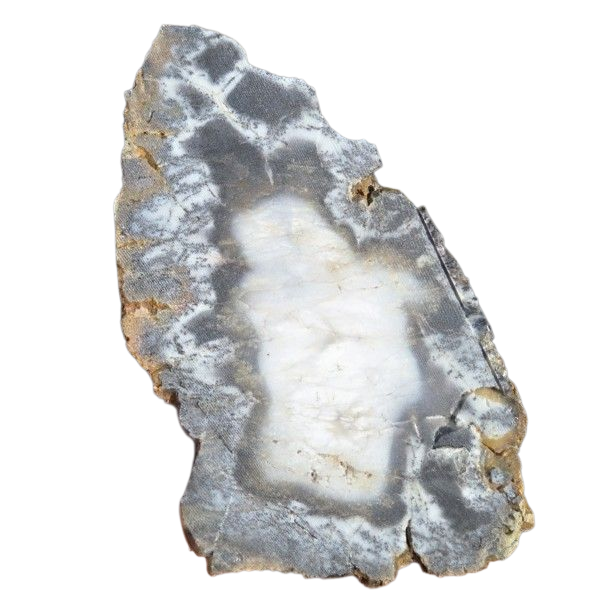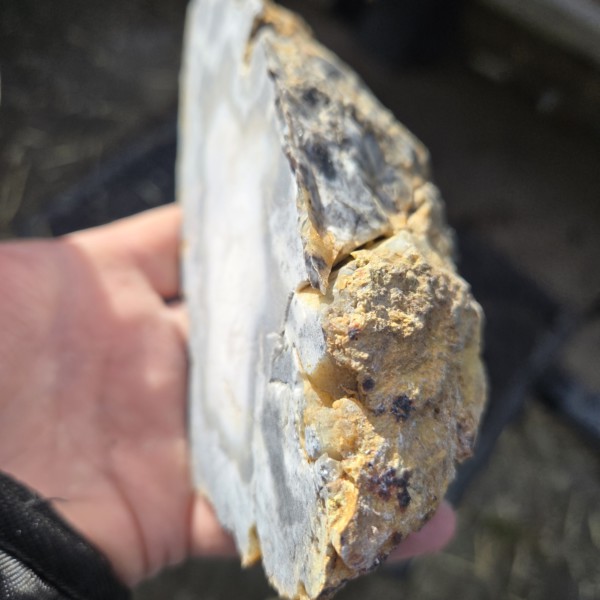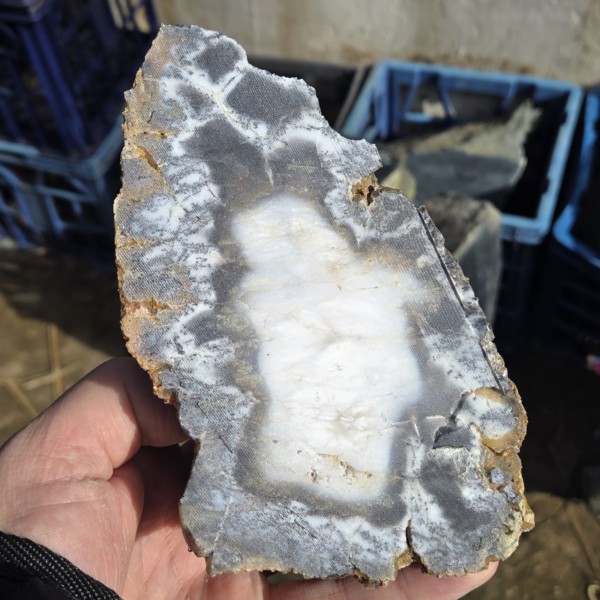DENDRITIC AGATE MERLINITE ROUGH
Out of stock
Dendritic Agate Merlinite Rough Rock, also called common Opal and Dendritic Opal. This solid rock is ready for lapidary work or carving. The beautiful patterns in the stone would look great in jewellery. A very nice Australian rock. This Specimen has been cut on one side To expose the interior Dendritic formations. A stunning stone showing light and dark. A great display specimen or into a slab saw for the lapidary worker to make Jewellery from.
Location:
Western Australia, Australia.
Dimensions:
14.5cm x 9.5cm x 7cm, 835g.
Opal: SiO2.
nH2O Hydrated Silicon Dioxide.
Opal has been a popular gem for many centuries and has a very interesting structure. The name opal comes from the Sanskrit name for precious stone upala. Opal structure is not crystalline and considered a mineraloid. The chemistry of Opal is primarily SiO2 and varying amounts of water. The amount of water varies from 5 -10% and greater. This water can help geologists determine the temperature of the host rock at the time the opal formed.
Check out more RocknSlabs for sale here
DENDRITIC AGATE MERLINITE ROUGH
Dendritic Agate Merlinite Rough Rock, also called common Opal and Dendritic Opal. This solid rock is ready for lapidary work or carving. The beautiful patterns in the stone would look great in jewellery. A very nice Australian rock. This Specimen has been cut on one side To expose the interior Dendritic formations. A stunning stone showing light and dark. A great display specimen or into a slab saw for the lapidary worker to make Jewellery from.
Location:
Western Australia, Australia.
Dimensions:
14.5cm x 9.5cm x 7cm, 835g.
Opal: SiO2.
nH2O Hydrated Silicon Dioxide.
Opal has been a popular gem for many centuries and has a very interesting structure. The name opal comes from the Sanskrit name for precious stone upala. Opal structure is not crystalline and considered a mineraloid. The chemistry of Opal is primarily SiO2 and varying amounts of water. The amount of water varies from 5 -10% and greater. This water can help geologists determine the temperature of the host rock at the time the opal formed.




